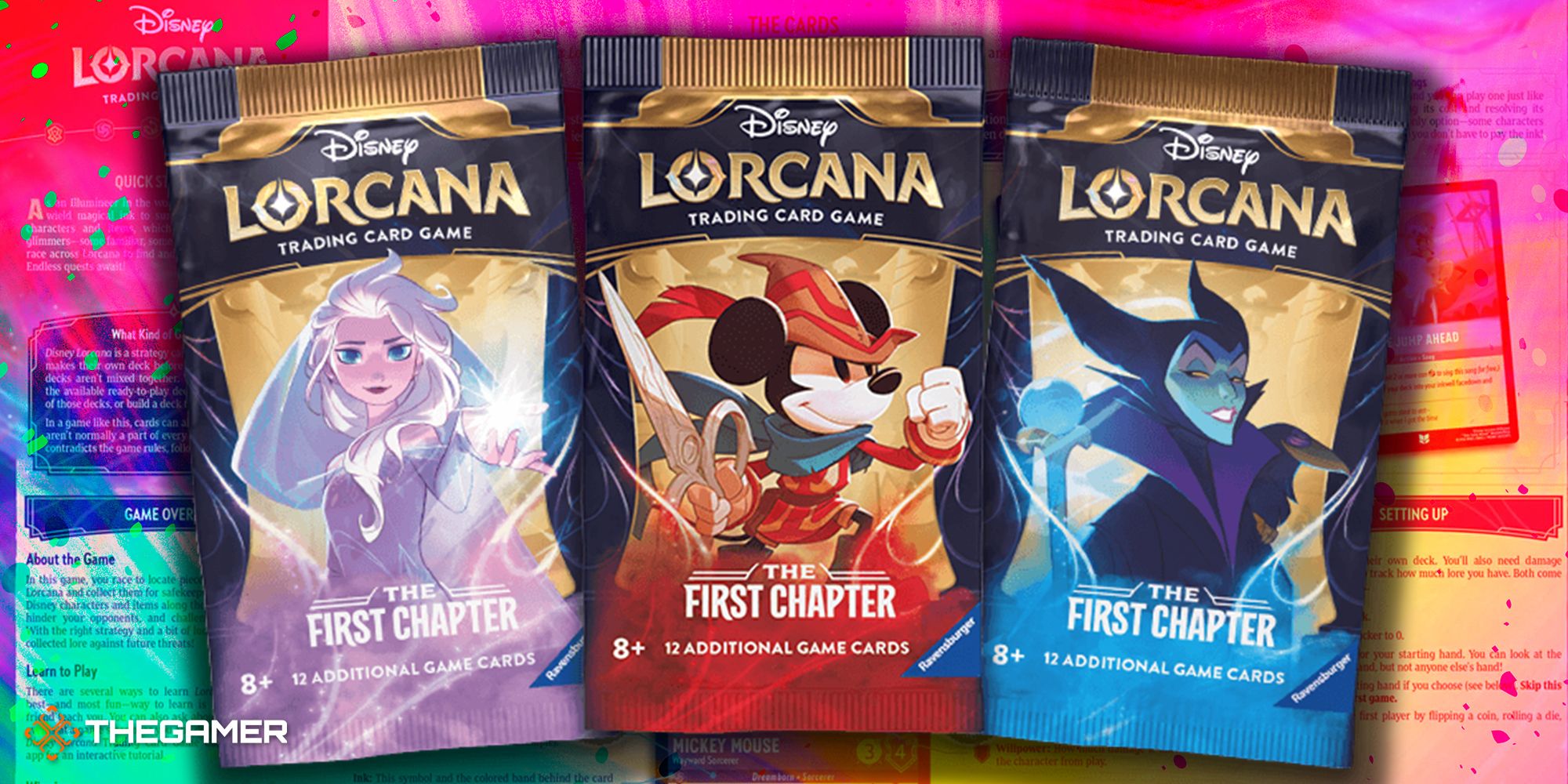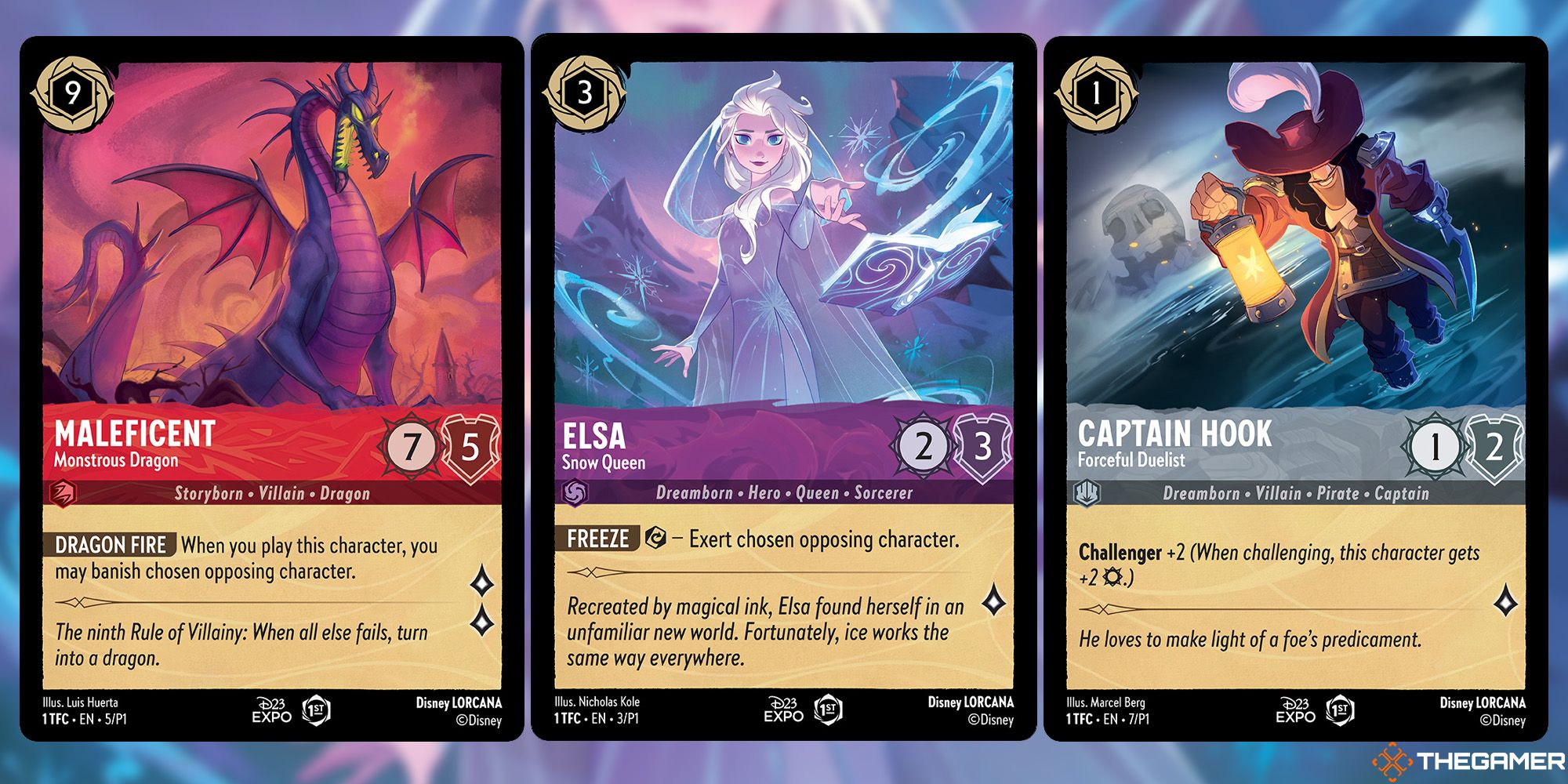The uncomfortable truth about any collectible card game is that most cards are useless. Every TCG and digital CCG is guilty of this. Whether it's a Hearthstone expansion, a Pokemon card set, or one of the countless Magic: The Gathering expansions that seem to release every 14 minutes, there’s going to be few worthwhile cards, and a whole bunch of pack filler.
It doesn’t matter whether you’re a collector or a player, most trading cards are junk. Pokemon releases new sets with 200-300 cards every few months, and only a couple dozen from each expansion will make their way into the competitive meta, or become valuable in the secondary market. The rest are just there to beef up packs, then sit collecting dust in countless basements and garages around the world.
When Ravensburger revealed the product details for its upcoming foray into trading card games, Disney Lorcana, I assumed it would function like every other TCG out there. The First Chapter will feature over 200 cards that you can collect by buying packs of 12. Each pack will contain six common cards, three uncommon, two rare, super rare, or legendary, and one foil of a random rarity. The news made me nervously glance over at my Pokemon ETB collection, each one full of “bulk” as it's unaffectionally called, which has grown so large that the shelf they’re piled on is now sagging from the weight. I didn’t care about any of these cards when I unwrapped them, and as they’ve accumulated, they ceased to be just useless and started to become a burden.
This week, Lorcana’s rulebook was finally unveiled, which gave us our first clear picture of how the game is actually played. There’s a lot of unique gameplay mechanics in Lorcana, compared to similar TCGs. Chief among them is its resource system, Ink, which doesn’t rely on a unique card type like Pokemon’s Energy of Magic’s Land cards. Instead, you will use the character cards - known as Glimmers, to create Ink for their Inkwell. In other words, most of the cards in your deck can be pitched to become your resource pool for playing other cards.
This system will have a huge impact on how decks are constructed and played. Lorcana decks contain 60 cards just like Pokemon and most formats of Magic, but in those games, you typically fill a third of your deck with Energy and Land cards. By eliminating those, Lorcana leaves a lot more room for building strategy and versatility into your deck. Since almost any card can become an Ink, you have more decision-making power each turn, and a lot more options about how to use your cards. It also prevents you from drawing dead later in the game when having more Ink wouldn’t benefit you. If a combo or strategy your deck uses isn’t going to work because you missed your opportunity to play it, your opponent’s deck will counter it, or simply the luck of the draw, you can pivot your plan and repurpose dead cards into Ink.
It’s a great twist on the standard mana pool mechanic, or even the pitching system TCGs like My Hero Academia use, but what excites me about it the most is how it recontextualizes and adds value to low-impact bulk cards. Since most Glimmers can become Ink, cards that would never see play in a competitive setting have the potential to fit into a deck, simply because the deck builder wants them to. If you look at pack filler as extra Energy cards, there’s so much more you can do with them.
One thing that’s always irked me about Pokemon is how little it tries to build around themes. The expansions don’t tell a story or feature any kind of cohesive design element, and, in turn, no one builds decks around an idea or theme either. Unless you’re in a Gym Leader tournament, there’s no such thing as a Water deck or a Bird Pokemon deck. You simply start with your win condition and add in cards that support that goal, regardless of what the Pokemon actually are. If your favorite Pokemon is on a dud card, it won’t ever see play.
Lorcana makes it so much easier to build flavorful theme decks. In a competitive setting you’ll still want to consider the strategy of your deck and the synergy of your cards, but if you want to put your favorite character in just because, you’re not necessarily going to hurt the strength of that deck. You can build decks around themes, like an all-villain deck (which the already revealed Hades, King of Olympus supports really well), a cat deck, or a princess deck. We even already have Brooms as a potential theme thanks to Mickey Mouse, Wayward Sorcerer.
Even if that means using cards that aren’t necessarily the strongest, it’s okay. They can just become your Ink. You still are limited by the requirement of only having two colors in a deck, but I think we’ll find a lot more variety and flexibility in the Lorcana meta than other similar games.
Lorcana collectors and players will still accumulate bulk. I fully anticipate weighing down another set of shelves with boxes full of Lorcana pack filler. But at least there’s no such thing as a useless card in Lorcana. Pack filler I get today might end up becoming a useful supply of Ink later on, simply because I want to get all seven dwarves in one deck or put all the blue Disney characters together (there’s more than you’d think).
As excited as I am to search for rare cards, craft exciting decks, and sink my teeth into the game, the thing I’m looking forward to the most is just being able to open a pack without already knowing 11/12 cards will be trash. Even if my favorite characters turn out to be duds, I’ll still be able to build them into a deck no matter what. As a Disney adult first and a TCG lover second, I couldn’t have asked for a better feature.


